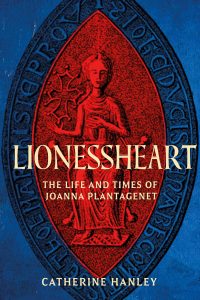UK Reviews for ‘The Sisters Who Would Be Queen’ by Leanda de Lisle have started appearing.
For US reviews.
The Sisters Who Would Be Queen: Review by Lesley McDowell – 21ts March 2010 – added 17th January 2011
Dying for Faith by Anglican Music – 3rd October 2010 – added 5th October
The Sisters Who Would Be Queen: A Book Review by Celia Jenkins – Suite 101.com – 25th September 2010 – added 26th September 2010
Lady Crook-Back – by Penny Batchelor – Disability Now -added 24 April
The Sisters Who Would be Queen: The tragedy of Katherine, Mary and Lady Jane Grey’ Mary S. Lovell reviews a new release by Leanda de Lisle – History Today (May 09) – added 21 April
‘The Sisters Who Would Be Queen’ by Virginia Blackburn – The Sunday Express (1 March 2009)- added 1 March
‘The ‘Protestant Joan of Arc’ who reigned for a fortnight’ by John Hinton – The Catholic Herald (27 February 2009) – added 1 March
‘Pawns in the Royal Game’ by Chris Skidmore – The Spectator Review (22 January 2009) – added 22 Jan
‘A Protestant Joan of Arc: The brief life and grim times of Lady Jane Grey and her family are dramatic and gory, says Frances Wilson’ – Telegraph Review (17 January 2009) – added 17 Jan
‘…in her utterly gripping life of Lady Jane Grey and her two sisters…Leanda de Lisle gives us the brief life and grim times of Lady Jane Grey and her family in merciless clarity and dazzling detail. This is a marvellously told and quite terrifying biography.’
Telegraph Review, 17 January 2009, p22
The poisoned chalice: A robust account of Lady Jane Grey and her two sisters reveals just how ruthless Tudor power politics could be’ by John Guy – The Sunday Times Culture (11 January 2009)- added 11 Jan
‘True treachery of the Tudors’ by Valerie Grove – The Daily Mail (9 January 2009) – added 10 Jan
‘When our ruler was a stroppy teenager’ by Kathryn Hughes – The Mail on Sunday (4 January 2009) – added 8 Jan
‘Doomed from Birth’ by Anne Somerset – Literary Review (December 2008/January 2009) – added 10 Jan
‘Leanda De Lisle’s ably executed biography of the unlucky Grey sisters starkly illuminates the perils of being a princess in sixteenth-century England…Resisting the temptation to sentimentalise…de Lisle successfully contends that in softening her more angular qualities Jane’s past admirers traduced her.
The story of this tragic trio makes compelling reading, whether they ended up as casualties of state or doomed lovers. Confidently guiding us through the complexities of the period, Leanda de Lisle recounts the poignant tale with sensitivity, shrewd insight and skill.’
Literary Review, December 2008/January 2009, p 43-44
BBC History Magazine (January 2009). See below for review – added 3 Jan
Family fortunes
Linda Porter learns the dangers of being a Tudor
‘Pity poor Lady Jane Grey. Tragic Protestant heroine, victim of the machinations of her ambitious parents and overbearing in-laws; the image of innocence sacrificed remains powerful 450 years after her death. But is this a true picture of England’s nine-day queen, and what of her two younger sisters, Katherine and Mary, who, like Jane, were born with royal blood? In her new book, Leanda de Lisle brings to life the unfortunate great-nieces of Henry VIII, placing them at the heart of the 16th century and the succession problem that haunted the Tudor dynasty.
It is a dramatic story and de Lisle tells it well. She expands our understanding of the girls’ upbringing and attempts, not altogether convincingly, to rescue the reputation of their parents. Perhaps they were not monsters but Henry grey was certainly inept and his wife, Frances, skilled at self-preservation. They were, however, committed to religious reform. This shaped Jane’s views. She was an intelligent girl who never sought the throne but did not shrink from it, either. This was no bullied teenager but a woman who wanted to lead. It was only the determination of Mary Tudor to claim her throne that stood in Jane’s way – and the failed nerve of her advisers. Initially imprisoned, her fate was sealed by her father’s involvement in rebellion. She was executed on 12 February 1554, full of Protestant zeal. It was a fate she welcomed.
Katherine and Mary Grey escaped the axe but led difficult lives as Queen Elizabeth’s unofficial Protestant heirs. De Lisle has rescued them from being footnotes. Neither sister had much common sense. Katherine, the family beauty, secretly married the Earl of Hertford and produced two sons, despite being closely supervised. Elizabeth was furious, refused to recognise the marriage and kept Katherine moving between a series of houses until she died at the age of 27.
When Mary Grey, the shortest woman at court, married Thomas Keyes, the tallest man, there might have been titters, but for the two lovers it was no laughing matter. Elizabeth’s permission had not been sought and Mary was also placed under house arrest for nine years. Keyes was locked in the Fleet prison and died without seeing his wife again.
So far, so harrowing. But there is more to the story of the Grey sisters than suffering. De Lisle reminds us of the real uncertainties of the period and the importance of the succession, something Elizabeth never managed to settle. Personally, she preferred Mary Queen of Scots to the troublesome Greys. They were too close to her throne for comfort – and paid a heavy price accordingly.’
BBC History Magazine, Volume 10, no 1, January 2009, p65
Tatler UK (January 2009) – See below for review – added 3 Jan
Tatler Review
By Sebastian Shakespeare
‘Leanda de Lisle’s The Sisters Who Would Be Queen (Harper Press, £25) brings the Tudor world to life in a story about siblings Katherine, Mary and Lady Jane Grey. Lady Jane Grey was queen for only nine days. The author rehabilitates her as less a victim of history than a headstrong individual with a sense of her own destiny. She was beheaded in private on the orders of Queen Mary and this fascinating tale relates how her plucky sisters adapted to life at court in an atmosphere of distrust and paranoia. Plain Mary became the queen’s maid of honour; Katherine changed her religion to retain the queen’s favour, then secretly married and provoked the wrath of Elizabeth. It was a miracle they lasted as long as they did.’
Tatler, January 2009, p82








































